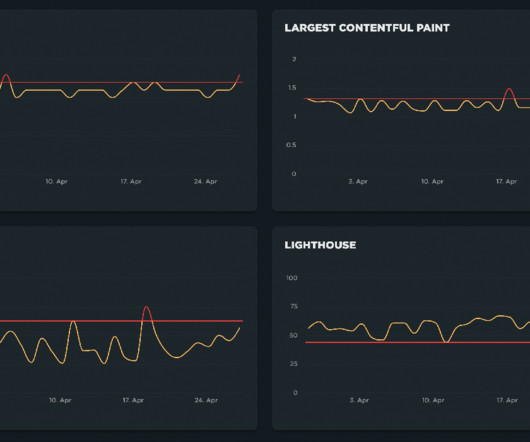How to use Server Timing to get backend transparency from your CDN
Speed Curve
FEBRUARY 5, 2024
Looking at the industry benchmarks for US retailers , four well-known sites have backend times that are approaching – or well beyond – that threshold. Pagespeed Benchmarks - US Retail - LCP When you examine a waterfall, it's pretty obvious that TTFB is the long pole in the tent, pushing out render times for the page.



















Let's personalize your content